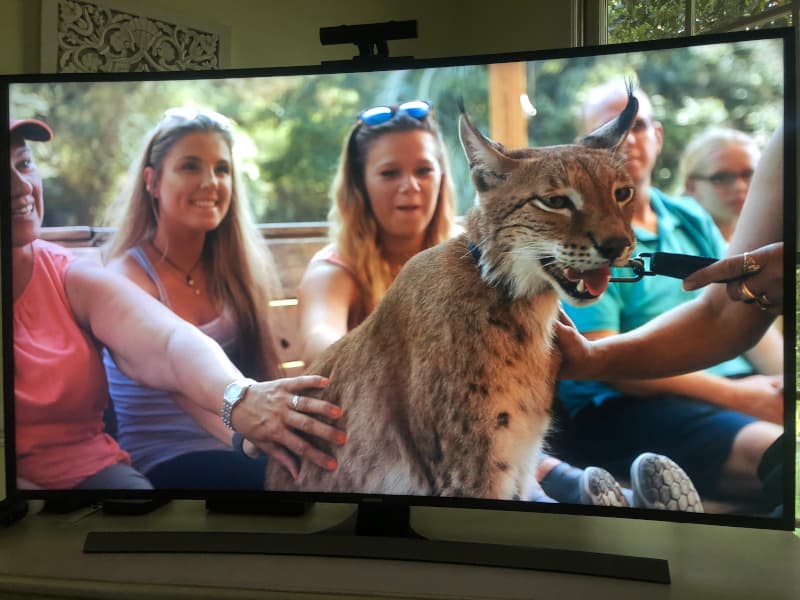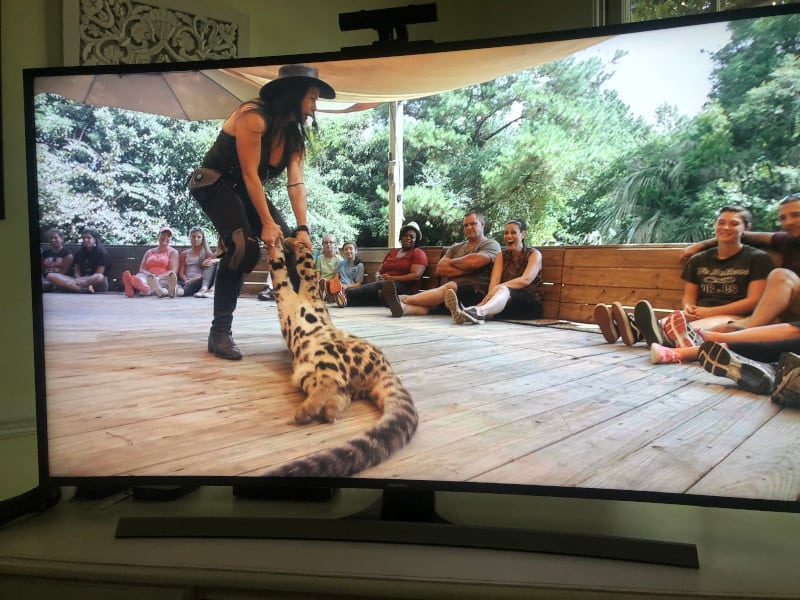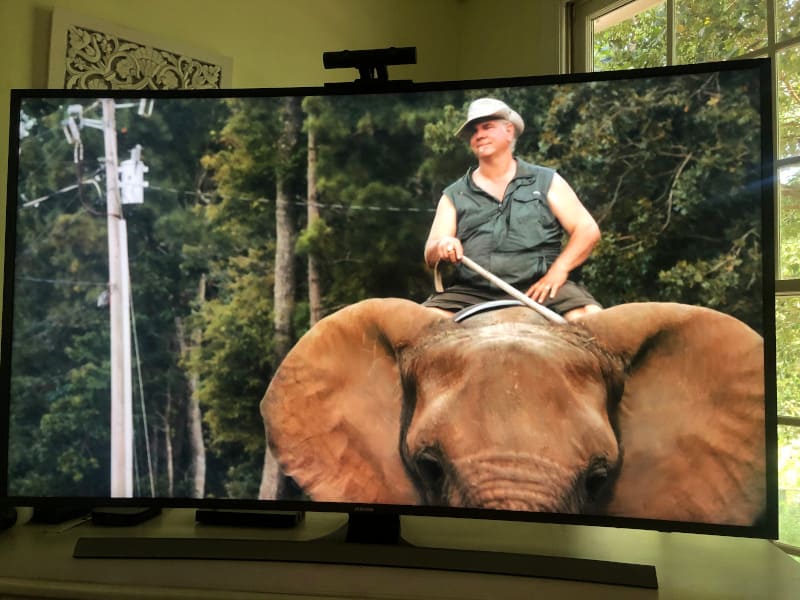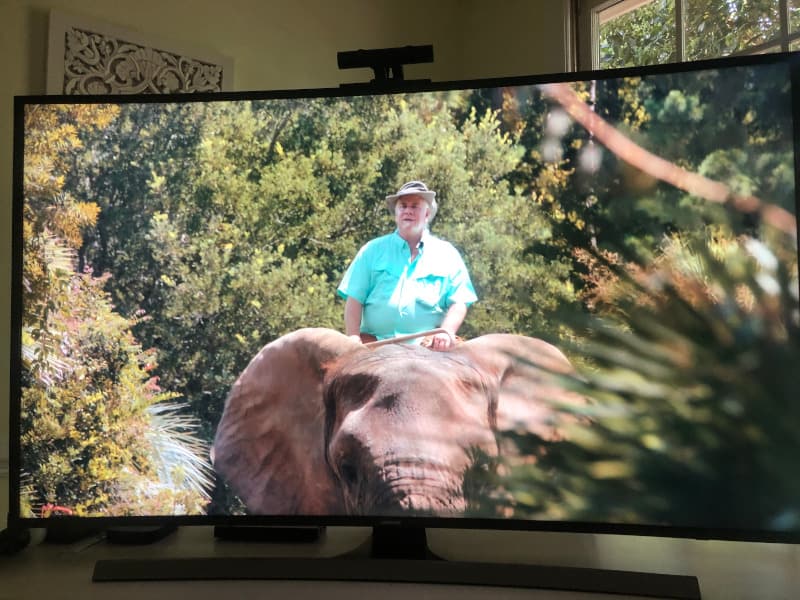The popularity of Netflix’s Tiger King brought important issues about big cats in captivity to the public stage. The biggest claim, perhaps, was that zoos are necessary to conserve big cats in the wild. Doc Antle, owner Myrtle Beach Safari, says it the most often and is the most convincing in this belief:
“We believe these (experiences) create a connection between us and them (wild animals) so they’ll open their hearts and their wallets to do our worldwide conservation work.
Doc Antle, owner of Myrtle Beach Safari
But is this true?
Doc Antle and the other zoo owners featured in the docuseries all profit off of their zoos. Are they telling the truth or just trying to make their zoo look good? They claim that Carole Baskin of Big Cat Rescue does the same (but read my take on Big Cat Rescue here).
To my great frustration, the series included no unbiased experts to talk about if there are connections between captivity and conservation. I understand the docuseries focused on the crimes of Joe Exotic. However, I thought it was really irresponsible to the public to bring these issues up, but leave them unaddressed by qualified experts.
That’s where I come in. I am an unbiased wildlife biologist and I evaluated the claims made in Tiger King about the facilities featured.
Just like I did for Big Cat Rescue and soon the Greater Wynnewood Exotic Animal Park, I researched Doc Antle’s Myrtle Beach Safari to see what they do for the conservation of wild animals, their educational value to the public, and animal welfare concerns.
I receive no money or have no association with any organization in the series. I’ve been in the field of conservation biology since 2003 and have a total of seven years of experience working in zoos and museums accredited by the Association of Zoos and Aquariums (AZA). This post is not about Doc Antle as a person, his character, or his lifestyle. It is only about the conservation, education, and animal welfare standards at Myrtle Beach Safari.
Let’s get started.
Conservation at Myrtle Beach Safari
Is Myrtle Beach Safari a Wildlife Preserve?
According to his bio, Antle is “the founder and director of The Institute for Greatly Endangered and Rare Species (T.I.G.E.R.S.), a world-renowned 50-acre wildlife preserve located in South Myrtle Beach, South Carolina, USA.”
First correction: The TIGERS preserve he is talking about above, is an acronym for his zoo, Myrtle Beach Safari. Myrtle Beach Safari is NOT a wildlife preserve. The word wildlife preserve is synonymous with a national or state park, protected area, or reserve. These are largely undeveloped areas of land reserved for nature. Preserves are meant to protect the native flora and fauna of the area that already exists.
Myrtle Beach Safari is a zoo. The animals are captive and can never be released to the wild. The animals are not even native to South Carolina.
Are They the World’s Most Effective Conservation Advocates?
Back to his bio: “He is also the founder of the Rare Species Fund (RSF), a grassroots organization that supports wildlife conservation projects in situ around the globe…The RSF places it among the world’s most effective conservation advocates.”
I currently work alongside colleagues from the top conservation organizations in the world: World Wildlife Fund, Wildlife Conservation Society, Conservation International, the Smithsonian, and the Zoological Society of London through Wildlife Insights. Never once have I heard any of them or anyone in my 17 years in conservation talk about Doc Antle, Myrtle Beach Safari, TIGERS, or RSF.
I’ve applied for every conservation grant that I could under the sun to get my various projects funded. This means that I searched conservation organizations all over the world for funding opportunities. I never came across TIGERS or RSF.
The Conservation Careers website made a list of top US Conservation Organizations and none of Doc Antle’s organizations are included. In fact, they are not even included in the complete list of conservation organizations in the US.
That being said, I investigated Doc Antle’s organization and conservation claims fairly to see if he really does do meaningful conservation work.
Does Myrtle Beach Safari Support Grassroots Wildlife Conservation Projects?
The mission statement of RSF is “to enhance wild species populations through the support of grassroots wildlife conservation projects, the maintenance of genetically representative viable populations of captive wildlife and the education of the public about conservation issues through the use of animal ambassadors.”
Let’s go over each part piece by piece. First up: supporting grassroots conservation organizations.
Most Money Goes to Myrtle Beach Safari…
According to his website, “to date, the RSF has contributed more than $1 million (USD) to wildlife initiatives throughout the globe.”
However “wildlife initiatives” does not necessarily mean grassroots wildlife conservation.
A recent article in Myrtle Beach Online stated that “The Rare Species Fund has brought in more than $1.5 million between 2014 and 2018…But most of that money appears to have been spent caring for what it calls its ‘animal ambassadors,’ which are based at the Myrtle Beach facility. More than $1 million has been spent on animal food and care or habitat repair and construction compared to about $500,000 on grants to organizations. That includes about $282,000 in grants to domestic organizations and $216,000 to foreign groups.”
Antle uses most of the money to pay for his “animal ambassadors” at Myrtle Beach Safari. This means he is using nonprofit money on animals at a zoo that makes a profit. Isn’t that illegal? Antle charges hundreds of dollars for cub petting and other interactions with animals.
I talk about animal ambassadors in my post on ethical zoos. Briefly, they are captive animals that represent species in the wild to spread educational and conservation messages. For example, the Cheyenne Mountain Zoo uses their orangutans as ambassadors for sustainable palm oil as palm oil is a threat in their native range. On their website, they have conservation actions you can take.
I looked through TripAdvisor photos for Myrtle Beach Safari and did not find any educational information or conservation messages (e.g. placards, signs). There are no conservation messages on the website. On the contrary, I just googled my local AZA-affiliated zoo, the North Carolina Zoo, and conservation is one of their website’s sections with tips you can do from home.
At Myrtle Beach Safari, all of the animals are brought out to guests on leashes. Therefore people probably leave with little understanding of the habitats the animals live in or the conservation challenges these animals face. Myrtle Beach Safari’s Instagram and YouTube also had no conservation messages that I could find.
How are the Conservation Dollars Spent?
According to the RSF website, there is some evidence that Antle donates to on-the-ground conservation efforts. However, his projects do not look like they are in the million dollar range, but rather tens of thousands of dollars (based on my own experience creating budgets for international research). They feature projects funding camera trap work, rangers’ salaries, and housing projects in developing countries.
It’s actually really difficult to tell what the RSF spends their money on and how much. This report stated they donated almost $16,000 to monitor the health of the local community living near gorillas and this report stated they donated over $100,000. The most recent posting of their donations is from 2017.
Like me, the author of the Myrtle Beach Online article had a hard time getting the numbers to line up:
“A review of the organization’s social media pages found images of oversized checks…But the amounts don’t match up with what’s reported in the nonprofit’s annual reports. The check for the Uganda organization shows $15,790, while the Rare Species Fund’s report shows no money granted to foreign organizations in 2015, and the check for the Sumatra organization shows $105,000, while less than $35,000 was reported as given to foreign organizations in 2017.”
David Weissman, reporter for Myrtle Beach Online
Antle declined to interview for that particular article. However, the article states that Antle has rebutted to similar past claims by saying he “donates a lot of money personally to organizations, and it doesn’t have to go through the nonprofit. ‘It’s my money and I take my money, by the millions and millions of dollars, over decades of time and I help other wildlife organizations to flourish.'”
This is incredibly strange. Why does Antle have a nonprofit if he donates privately and prefers to do so? Private donors can donate to whatever charity they want to.
On the other hand, ethical nonprofits have a board of directors that helps the charity make these decisions of where the money goes. And any nonprofit money is not Antle’s money; it belongs to the nonprofit.
No Process for Conservationists and Scientists to Apply for Funds
It is very clear that Antle’s nonprofit does not follow the normal protocol for conservation funding.
I am not alone in thinking this. The Myrtle Beach Online article interviewed Dr. John Goodrich, chief scientist and tiger program director for Panthera. Like me, Goodrich had never heard of Antle or the RSF before the interview. He was also surprised not to see any process for researchers to apply to use the conservation funds for their projects.
Usually a nonprofit will open up applications for grants to fund specific types of research projects. They will call for proposals specific to a species, area of the world, or type of project. You can see an example here with grants offered by National Geographic’s nonprofit. There is often a deadline to submit.
After the deadline passes, a panel of experts reads through all of the proposals and scores them based on factors like conservation urgency, importance, the credentials of the applicant, and how scientifically robust the project is. The proposals with the highest scores are awarded the funding.
When I write proposals for conservation grants, I have to detail exactly how I plan to spend the money and what the expected outcomes are. If I was awarded the money, I need to keep detailed information on exactly how I spent the money and submit this information to our grants department.
Grassroots Wildlife Conservation Projects
It does look like Antle has funded some conservation and monitoring projects in Africa, Asia, and South America. However, because there is no peer-review process or even application, it’s difficult to evaluate if the projects are conducted in a way in which meaningful data are collected and/or outcomes are produced.
For example, Antle includes his own Myrtle Beach Safari, a private zoo under North American conservation projects. He also lists Jungle Island, another for-profit zoo in Florida. Donations to for profit businesses are not grassroots conservation projects.
He does have many other conservation organizations listed, but judging by the reports and photos (or lack thereof), it seems that the only active ones are on camera trap research and anti-poaching patrols. These are both important in conservation research and monitoring.
He seems to mostly donate to Conservation Through Public Health in Uganda, which does seem like a legit non-profit. I met one of scientists who is now on their Scientific Advisory Committee when I started my Ph.D.
Despite this, I think it is really strange that I have never heard of his organization because I specifically work in camera trap research. In fact, as part of Wildlife Insights, I have literally been traveling the world for the past few years (Toronto, Madrid, Kuala Lumpur) reaching out to camera trap researchers to get them on board with Wildlife Insights. In our biweekly meetings, we constantly discuss all of the major camera trap researchers and organizations. If RSF was making significant contributions to camera trap research, we would hear about it.
Genetically Representative Viable Populations of Captive Wildlife?
Now, let’s talk about Antle’s last conservation claim: maintaining genetically representative viable populations of captive wildlife. This one is easy to address. It is misleading because it is completely unnecessary.
AZA-accredited zoos already maintain genetically viable captive populations for every species in a zoo. There is no need for extra tigers outside of the AZA as they breed well in captivity. Antle is producing more tigers for cages. As Antle cannot house an unlimited supply of baby tigers, they are likely sold to roadside zoos or private individuals who cannot property care for tigers, and will eventually end up in a sanctuary.
This article written by a big cat scientist explains how private zoos do not maintain genetic diversity according to the described subspecies.
Antle breeds a lot of animals that are completely useless for conservation and do not even exist in the wild such as hybrids like ligers and tigons. He also seems to breed according to color and aesthetics and not subspecies. The latter is important for conservation, while the former has no conservation purpose.
Because hybrid felines like ligers and tigons don’t exist in the wild, they have no conservation value—and they often suffer from health problems. #WildlifeConservationDay pic.twitter.com/qwdPP8ifsw
— National Geographic (@NatGeo) December 4, 2019
Education at Myrtle Beach Safari
It’s hard to evaluate the educational value of Myrtle Beach Safari without going there myself, but from what I’ve seen, it offers little to no educational value.
First I’ll start with the website. There is really no educational information about the animals and there is even incorrect information. For example, no matter what animal you click on, the taxonomic classification information below applies to chimpanzees. This information is even incorrect. The scientific name for chimpanzee is genus Pan and species troglodytes, but the website says the genus is Panthera, which is the genus for big cats.

Again, if you compare Myrtle Beach Safari’s website to the North Carolina Zoo‘s, you will see dozens of animals on the NC zoo website. Each animal has a link to its own page with facts about the species.
Antle frequently shows wildlife in human clothes and on leashes. People probably leave with little knowledge about those animals in the wild. Unlike ethical zoos, they will not be able to see the type of habitat the animal lives in, the social groupings they have, or interesting behaviors.

Myrtle Beach Safari has a YouTube channel, which offers very limited educational information, and again, even false information.
Most of this video is just footage of Bubbles the elephant in the river, but Antle does provide some elephant facts. He says the average elephant is 37 years old. This statement doesn’t even make sense. The average age of elephants in in the wild are 37? Across all species and all populations? I am unaware of a study on this and since 96 elephants are estimated to be poached every day, this number would be constantly changing.
I think he is trying to say that the average life span of an elephant is 37 because before this he first says the oldest elephant ever to live was 88 years old. If this was the case, his statement is also incorrect. Elephants live to be in their 60s and 70s in the wild unless they are poached. Poaching is at an all time high currently and a conservation issue he could have mentioned.
Most of the other videos are things like “Chimps make chocolate chip cookies” and “chimps make smoothies.” There is literally no educational value at all. Some videos just have music in the background.
This also spreads misinformation about wildlife because of the way the animals are shown. These videos make chimps seem like they are little humans or like domesticated pets. Chimpanzees are endangered, highly intelligent, and socially complex.
Animal Welfare at Myrtle Beach Safari
From watching the Netflix series, it appears that Myrtle Beach Safari takes good care of their animals. However, I suspect the animal welfare standards are similar to those at Joe Exotic’s Greater Wynnewood Exotic Animal Park. I just think Doc Antle is better at hiding them.
The docuseries showed no footage of the facilities where the animals are housed. Across social media and TripAdvisor, all of the photos are of people holding the animals or engaging with them on the lawn or in the arena.
Where does Bubbles the elephant stay during the day? The big cats and chimps? This is extremely suspicious (and unlike Big Cat Rescue, which is very transparent about their cages).
I could only find this photo below that looks like it is part of the tigers’ enclosures. It is a strange photo though. There are 10 tigers together and most are on one deck. It reminds me of the scenes in Tiger King where there are way too many tigers in a single cage and they are all running around in the mud.
It looks like all of the animals at Myrtle Beach Safari are tamed by humans. Hand-rearing wild animals in my opinion is a form of animal abuse. The animals are taken away from their mothers immediately after birth. These zoos break the strong bond that tiger and other mammal moms develop with their young. In the wild, tigers stay with mothers for 2-3 years. Female African savanna elephants stay with their moms their entire lives.
Taming animals for petting is also cruel because the animals do not have a choice in interacting with the public. At AZA and other ethical zoos, animals can hide from the public if they want to. At Myrtle Beach Safari, animals are quite literally dragged out on a stage to interact with humans.

It looks as though some of the animals have to perform tricks. For example, Bubbles the elephant poses in photos. Elephants, especially Bubbles’ species, the African savanna elephant, cannot perform tricks without abuse. It is part of the training process.
In response to an elephant riding post I wrote that included this process, an animal trainer told me that I was wrong about and that trainers no longer do this. I asked them to explain to me how to train an elephant and that I was genuinely curious. They only said it was about the “bond” and would not provide any more details despite me asking numerous times.
Every scene that Doc is riding Bubbles, he has a cane. I never saw him use the cane for walking or anything else. I believe this cane is a substitute for a bullhook to keep Bubbles under control.


Bubbles appears to be the sole elephant at Myrtle Beach Safari. I studied elephants for my Ph.D. research. This in itself is cruel, especially for females. Elephants are highly social animals and females are the more social sex.
Antle claims Bubbles is an orphan from poaching. This may be true, but Bubbles may have also been purchased after legal cullings of elephants took place in South Africa. Despite this, living a life in isolation from other elephants is really quite cruel. In areas of Africa that are highly poached, unrelated elephants will form their own groups as opposed to being alone. Many zoos no longer practice keeping solitary elephants and will even send their elephants to other zoos for the animals’ welfare.
Finally, there is the question of what Doc does with his cubs. In the Netflix series, when the director asked one of his former employees what happened to her favorite tiger, she insinuated it was an unwritten rule not to ask where the tigers went.
Joe Exotic outright accused Antle of gassing cubs and cremating them. Antle denies euthanizing his animals, but never addresses where they go. He advertises cub petting year round, meaning that somewhere between 12-84 new cubs are born each year just at his facility.

Finally, it really bothers me that some of his tigers are so fat. Just like it is for humans, obesity in animals is a major health problem.
In conclusion, it does look like Doc Antle donates some money to the conservation of animals in the wild through camera trap research and anti-poaching patrols. However, it is not nearly as much as he claims, and it is unclear how successful these projects are. Myrtle Beach Safari offers little to no educational messages to the public.
Most importantly, I do not think the ends justifies the means. Cub petting is cruel for the reasons mentioned above. As a conservation biologist, I would never spend my money supporting abuse in captive animals for the protection of wild animals.
Check out my podcast episode on animals in captivity for more talk about Tiger King.
Update: Antle Arrested
In October 2020, Antle was “arrested and charged with one felony count of wildlife trafficking, one felony count of conspiracy to wildlife traffic, four misdemeanor counts of conspiracy to violate the Endangered Species Act, and nine misdemeanor counts of animal cruelty, officials said.”
Love this post? Share it with friends!



